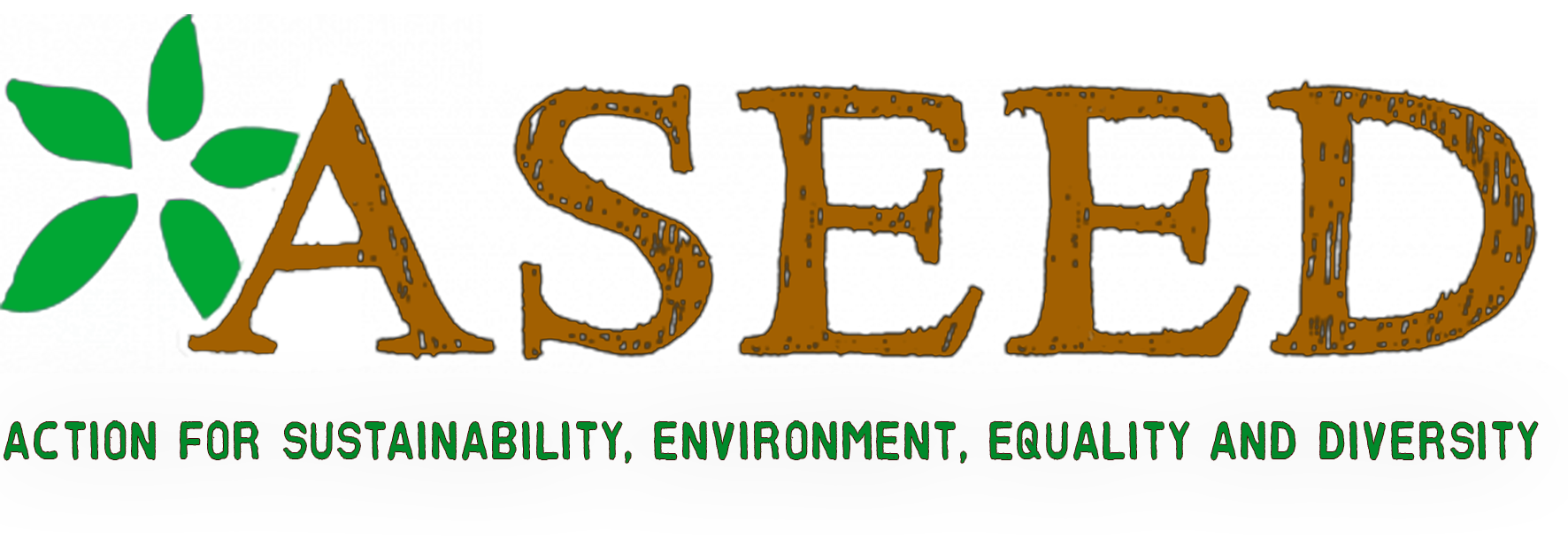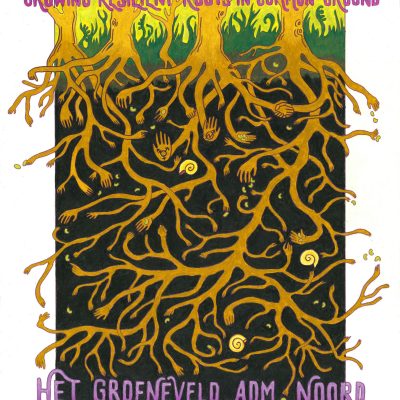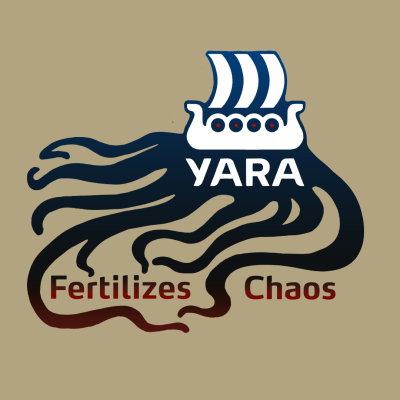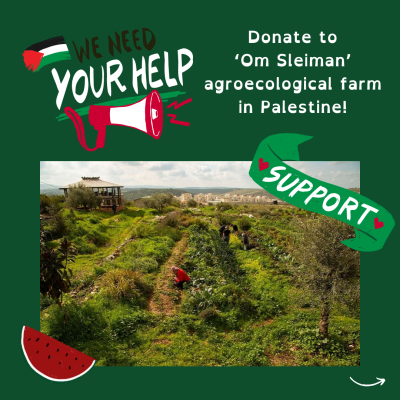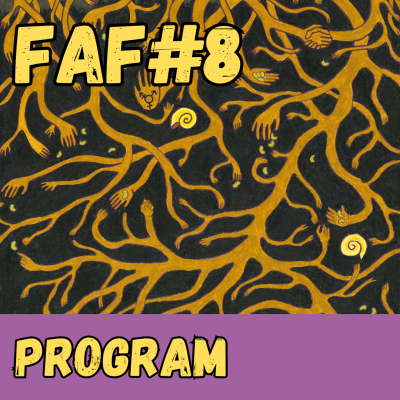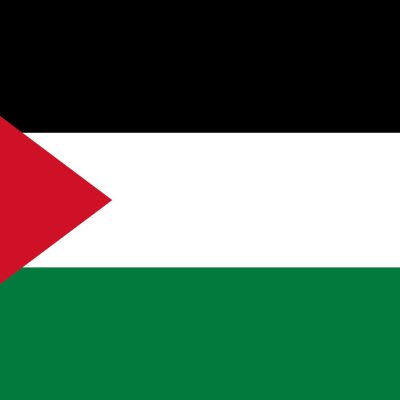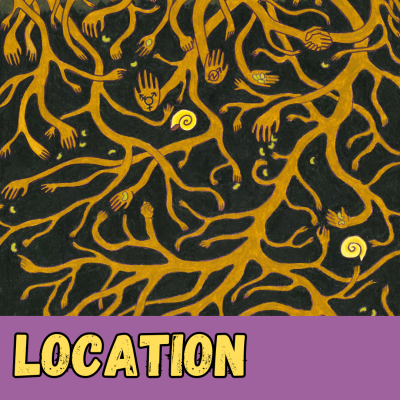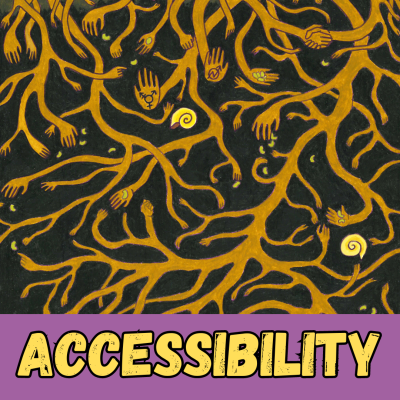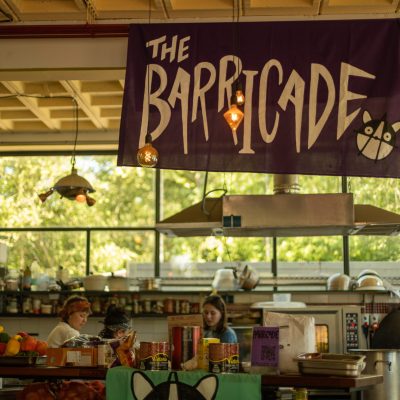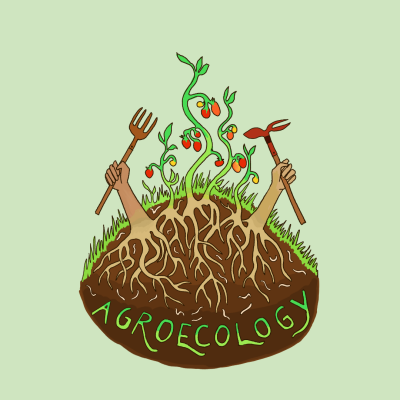How Industrial Livestock Production is Causing Climate Change and how to Organise Against it.
Introduction
During the International Geological Congress held in Cape Town last year, a group of scientists announced the Anthropocene, an epoch in the earth’s history defined most prominently by human activity. One piece of evidence, that scientists believe future archaeologists would use to recognise this era, is the prevalence of fossilised chicken bones; according to them, the global domestication of a vast number of chickens, bred and reared for meat and eggs, is one of the defining features of the Anthropocene [1].
In the last 50 years, livestock populations have exploded [2]. Chickens, cows and pigs now number in the billions, far outnumbering the human population they are reared to feed [17]. Driven by a combination of social, economic and political factors, this change has had clear and dramatic consequences for the world we live in, not least through the emission of massive amounts of climate-altering green house gases (GHGs).
Estimates vary, but a conservative calculation provided by the United Nations Food and Agriculture Organisation (FAO) suggests that livestock production is responsible for 18% of global anthropogenic GHGs, including 37% of anthropogenic methane emissions [3]. Assuming this calculation to be correct, livestock produces more GHGs than the entire global transport system directly contributes.
This piece will explore the source of livestock emissions, with a focus on animal feed as a driving component. The link between emissions and animal feed will be explained as a product of the recent historical trajectories in agriculture and the primary actors will be exposed. It will be argued that the only true solution to the issue is to implement agroecological practises within a framework of broader social struggle and that the Anthropocene is better understood as the Capitalocene.
Livestock Emissions
The principal sources of GHGs from livestock are land-use change (comprising deforestation and the conversion of pasture to cropland), the production of animal feed and the use of synthetic fertilisers that goes along with it, enteric-fermentation (the belching and flatulence of ruminant livestock), transport and refrigeration.
According to the widely cited UN report, ‘Livestock’s Long Shadow’, livestock and its related activities produce 9% of carbon dioxide emissions (primarily from deforestation for pasture and to create more space for growing feed crops), 35-40% of methane emissions (from enteric-fermentation and manure), 65% of nitrous oxide (chiefly from the use of nitrogen-based synthetic fertiliser used on animal feed crops) and 64% of ammonia emissions. According to this estimate, livestock contributes to almost 80% of all agricultural GHG emissions. [3]
Other kinds of estimates have been made in an effort to demonstrate the GHG emissions inherent in industrial livestock production by comparing the fossil fuel consumption of different food groups. For example, one study conducted suggests that 25 kilocalories (kcal) of fossil fuels are spent producing a single kcal of animal protein, compared to 2.2 kcal in 1 kcal of plant protein. According to the same study, the ratio differs depending on the source of the animal protein; beef has by far the highest ratio, while chicken offers the most efficient energy in/energy out ratio at an average of 4:1 [4]. Another source suggests beef emits more than 150 times the GHG emissions of soy [18], while the Environmental Working Group claims lamb, beef and cheese, in that order, make the largest contribution to GHG emissions of any common food type (including non-animal products) [19].
Examining the source of livestock related GHG emissions also serves to highlight global inequalities, with per capita meat consumption almost three times higher in developed countries compared to developing nations [6]. It is clear that GHGs associated with livestock are disproportionately caused by the wealthiest nations, who are likely to be the least affected by climate change.
The damage does not end with GHGs either. Industrial livestock is responsible for significant water pollution and the creation of ocean dead zones (areas of water where living organisms perish due to lack of oxygen caused by fertiliser contamination); waste from intensive livestock production facilities encourage the emergence of life threatening diseases and pathogens. On top of this, the conversion of biodiverse rainforests is leading to a significant reduction in biodiversity and driving species extinction; areas once biologically unique have been replaced by millions of hectares of monocultures grown to feed growing livestock populations. Alongside environmental concerns, the treatment of animals in industrial livestock operations falls far short of what might be considered ethical and workers in meat packing factories are notoriously exploited and often experience trauma. [4]
All of these issues are linked to the use of animal feed and the industrialisation of meat, egg and dairy production that its use has facilitated.
Animal Feed and the Industrial Livestock Sector
The emergence of intensive livestock farming and the use of grains and oilseeds – such as soy – as animal feed was made possible by 20th century agricultural industrialisation, which was characterised by hybrid, high yielding crop varieties, the widespread use of machines and the application of chemical inputs, used for fertilisation and pest and weed control. The new system led to overproduction, generating tremendous grain surpluses. Rather than use these surpluses to solve world hunger, profit driven producers, with the help of the state, sought new, profitable avenues for the absorption of the surplus. [4]
As the price of grain fell, precipitated by increasing yields, a profitable avenue was found by funnelling grains and oilseeds into the livestock industry as animal feed [4]. As a result, unprofitable grain was converted into high-value meat products. The continued depreciation of the price of grain and oilseeds over time has allowed the expansion of industrial livestock without notable price increases for consumers [3].
State support for the animal feed sector has been a constant factor in its continuation and expansion. The United States has supported the use of soybeans as animal feed internationally in order to support production of soybeans at home; the Blair House agreement between the EU and the USA ended a limited system of support for domestic soybean production active in the EU and prevented tariffs on the import of soy and other oilseeds, pushing producers to depend more intensively upon cheap imports [2]. This, along with the BSE (Bovine Spongiform Encephalopathy) crisis in the early 2000s, boosted European dependence on soy imports, as the crisis led to legislation preventing food waste from being used to feed animals, leaving a gap in the amount of food farmers had to give to their animals [11]. While the Blair House agreement was initially introduced to support soy production in the US, increasing demand in Europe is now largely being met by South American nations, chiefly Brazil, followed by Argentina and Paraguay [2] [12].
The European Union continues to be receptive to the needs of the animal feed industry, and the demands of the industrial livestock sector, maintaining oilseed import tariffs at zero [5]. Shadowing the dramatic global increase in livestock production over the last 50 years, imports of animal feed to the EU rose by a factor of 10 from 1961 to 2009 [2]. In 2013, the EU imported 40 million tonnes of oilseed cake (the part of the seed remaining after oil has been extracted), the Netherlands accounting for 7.5 million tonnes of the total; the Netherlands also imported 6.1 million tonnes of whole oilseeds in the same year, with the EU importing nearly 20 million tonnes in total [6]. It is worth noting that the emissions caused by the production of imported animal feed are not included in EU GHG emissions calculations. Under the Kyoto Agreement only emissions produced within a territory are counted, no matter where the final product is consumed.
Without the input of feed crops, livestock populations could not possibly be sustained. Feed, therefore, multiplies other sources of GHGs resulting from the huge number of animals and the infrastructure necessary to convert them into food and bring the finished product to consumers. This system ends with a net loss of protein (and thus energy), as much energy is lost during conversion through the animals’ metabolism; it is now the case that livestock, while traditionally used to produce protein using land not suitable to other kinds of agriculture, are consuming far more protein than they are contributing, with the oft quoted ratio being around 10:1 [4].
In 2010, feed production constituted roughly a third of all grain and oilseed production, putting animals in direct competition with humans for food [4]. In 2013, an estimated 1 billion tonnes of cereals were used to feed humans, while 750 million tonnes went to feed livestock [13]. Taking into account both cropland and pasture, livestock currently uses 70% of all available agricultural land and 8% of the global water supply [3].
It is important to point out that some livestock systems can be ecologically sustainable. A significant portion of the earth is grassland, upon which cattle can be reared while simultaneously sequestering carbon in soil and organic matter – provided the soil is not ploughed [2]. Sequestration rates can even be improved in areas where trees can be integrated with pasture, a system called Silvopasture [20]. Both systems, pasture and Silvopasture, properly managed, can neutralise the negative impacts of livestock on the climate and local environment.
The Monsanto Connection
The rise of animal feed as a primary source of sustenance for livestock has gone hand-in-hand with the ascendance of input intensive agriculture. Due to their genetic uniformity and the intensive method of production that leads to the degradation of soil quality, monocultures of grains and oilseeds are dependent on the use of large quantities of synthetic fertilisers and chemical-based pesticides and herbicides produced by Monsanto and other chemical/seed corporations. On top of this, animal feed from the United States and South America is now produced predominately with genetically modified (GM) soybeans. In the US, 94% of soy production is GM [7]; in Brazil 88% of soy production is GM [8]. The main supplier of GM soy is Monsanto (soon to be Bayer) with 90% of GM soy production linked to the company [9].
The GM industry has used the avenue of animal feed to circumvent people’s objections to eating genetically modified foods [4]. This is particularly the case in Europe, where opposition to GMOs has been vigorous; the majority of EU states does not allow GMO crops to be grown in their territories [10]. Yet, unless purchasing pasture-fed or organic (bio) products, meat-eaters all over the EU are indirectly consuming GM produce through the meat they eat. While GM ingredients in European food must be labelled, it is not necessary for producers to state whether their livestock were fed GM grains or oilseeds.
The Main Players
Alongside Monsanto, who supply the seed and chemical inputs to grow the crops, there are several other notable actors involved in the “grain-oilseed-livestock-complex” [4].
On the supply side you have large-scale, industrial farmers in South and North America producing soybeans and other grains for use as animal feed on a massive scale. The farmers purchase (predominately) GMO soy beans from Monsanto or their licensees, along with the necessary chemical input to control pests and weeds. Once the seeds are planted, farmers must feed them with the necessary nutrients; to do so they must purchase synthetic fertiliser from one of several producers, the largest being Yara.
Once the crop is ready, it is sold and shipped to one location or another. In Europe, commodity trading companies bring the soybeans in on cargo ships. ADM, Bunge, Cargill and Dreyfus form the ABCD of the world’s commodity trading companies. The primary player is Cargill, a privately-owned, US based company worth an estimated $50 billion. Cargill processes the soy at locations around Europe, including Rotterdam and Amsterdam. It is then sold on to European farmers, to be fed to their livestock.
Once fattened with imported oilseeds, livestock are sent to the slaughterhouse. In Europe, the biggest meatpackers are VION, Tonnies and Danish Crown, while in the US the market is similarly concentrated, with 8 companies – one of whom is Cargill – controlling a majority share of the beef, pork and broiler chicken markets [21].
All of this is facilitated, supported and protected by states whose territories are involved in the process. By supporting and enforcing patents on GM seeds, protecting the rights of industrial farmers and companies to profit from their activities, and by supporting a business-friendly regulatory framework – i.e. omitting soy imports from tariffs, allowing intensive rearing of animals and so on.
Both the companies and the states involved have a vested interest in the structure of the livestock industry. Companies are generating huge profits, providing tax revenues for states, and on top of this, western states are able to maintain control of the global food system.
No Simple Solutions
There are palliative solutions on offer, such as encouraging a reduction in meat consumption and the adoption of plant-based alternatives, altering the BSE laws to allow food waste to be fed to pigs and pushing for state support for local agriculture as opposed to facilitating the widespread use of animal feed. However, such ‘solutions’ fail to address the underlying, systemic issues, which suggest their efficacy is limited. On top of this, proffering palliative ‘solutions’ has the effect of distracting from serious efforts to overcome the problem and legitimises a business-as-usual approach to problem solving by working with the same power structures that got us into trouble in the first place. We need a whole new system, a whole new way of relating to our surroundings.
The situation is clear: to eliminate the emissions caused by industrial livestock we must, ultimately, end industrial meat and dairy production. In order to transition towards this final goal, it is necessary to vastly reduce global meat and dairy consumption and rear livestock only within local, ecological realities.
As stated earlier, it is possible to raise animals on pasture and silvopasture without harming the environment. Using only naturally suitable land to rear livestock would necessitate a huge reduction in livestock production; meat and dairy would no longer be ‘subsidised’, so to speak, by millions of hectares of cleared rainforests, fossil fuels and chemical inputs.
To raise animals solely within the local, ecological limits of any given region means cutting out the middle men – the Cargills and Monsantos of this world – feeding animals on local food sources only and eating locally reared, organically produced, meat, eggs and dairy.
To achieve this, the global import/export model of production has to be confronted and overturned. The Netherlands, a tiny chunk of land in Western Europe, is the third largest meat exporter in the world; situations such as this cannot prevail if livestock emissions are to be sufficiently curtailed.
Creating a system of livestock production based on local, ecological realities quite clearly demands a reduction in the amount of meat, eggs and dairy being consumed. Alongside this, a willingness to refocus regional food production infrastructure towards supplying local communities is necessary. Achieving these goals in the face of entrenched power structures will require the emergence of a powerful social movement; one that is underpinned by principles and ideology that inherently recognise these objectives.
Towards Agroecology: as a Component of the Social Struggle
Achieving the above requires a simple and appealing approach to agriculture (and other areas of life too): that people should work within the ecological realities of their surroundings. Applied to agriculture, this principle is expressed through the concept agroecology, and the success of its practical application is increasingly being proven [See: 14, 15 & 20].
Yet for this principle to succeed on a large scale, it will require more than the promotion of technical changes to the way food is grown; notions of economic growth and profit for profit´s sake have to be dismissed, for they are endemic of an exploitative – and oppressive – system that refuses to accept local, ecological realities. Such a system does not, and will not allow for the widespread implementation of agroecological food production. The destructive advance of the animal feed industry into the Amazon rainforest (often at the expense of local and indigenous communities who are expelled from their lands as a consequence) in order to feed growing livestock populations in Europe and China is an apt example of this.
Support for agroecology will not be found at the state level. Pressuring the state to introduce regulations favourable to an agroecological system of food production will not be enough – if even possible, given the (asymmetrical) balance of power in favour of big-business and finance capital – as the state and agroecology are ideologically and behaviourally incompatible; The former based on oppression, exploitation and expansion, the latter on harmony and mutual cooperation. For this reason, building a truly agroecological food system requires changes to all areas of life affected by the state/capitalist system; in particular, land, technology, knowledge and all other resources must be understood as common goods, rather than private property.
Challenging the concept of private property is crucial for it underpins a system of growth based on the exploitation of people and the environment. The creation of private property regimes in Europe and around the world has left the majority without access to the resources they require to meet their needs. To survive, propertyless people are forced to sell their labour, while those with property are able to amass great quantities of it, more than they will ever have personal need of. This system drives the exploitation of the earth by human action, as the rich compete to become richer, while the poor must ceaselessly work in order to gain the means of their survival, forced to surrender a portion of their productive efforts to the enrichment of others.
The relationship between private property and poverty is nowhere more true than when considering the distribution of land, which in Europe is highly concentrated among the rich and increasingly so [16], leaving the rest landless and forced into precarious labour in order to feed, clothe and house themselves. Those without land are unable to control how their food is produced, their control over the food system reduced to little more than their role as consumers, their voice defined by the amount of money in their pockets. Under these circumstances agroecology cannot flourish. We must rethink and recreate our social and ecological relations on new terms.
This requires a shift beyond a dependence on authoritarian structures and towards structures created from the bottom up. Building a new food production infrastructure that operates on agroecological principles and positions itself within the context of the broader social struggle is the only viable way to do this. Organisations must be created that seek to establish themselves as materially and ideologically independent from authoritarian power structures, by growing their own food, building their own shelter and so forth, and working on the basis of self-organisation, cooperation, mutual aid and solidarity, within and between organisations. Through these autonomous structures, the principle of adhering to the capacity of the local environment could be spread, supported and incorporated under the umbrella of the broader social struggle, the success of which, the widespread implementation of agroecology depends upon.
At present, self-organised structures are few, suggesting the so-called Anthropocene is perhaps better understood as the Capitalocene [see 22 & 23], for capitalism is the dominant mode of production and organisation, and the cause of the environmental catastrophe that is shaping our world. To overcome this we must organise; creating local structures – that are regionally and internationally connected – comprised of existing (and future/potential) agroecological farmers and growers, based on self-organisation, mutual aid and cooperation. These structures must interlink with all the other self-organised producers of the means of human existence in a cooperative fashion.
To end the excessive greenhouse gases caused by livestock we must end our capitalist approach to food production and begin to work in harmony with our surrounding ecosystem. We cannot grow or intensify our way out of this crisis and the only innovation we can accept is the rejection of the exploitation of our environment. We cannot rely on the forces that have brought us here, the states, corporations and petite capitalists; we can only rely upon ourselves and our ability to organise an entirely different world.
You can learn more about agroecology and its political dimensions by coming to the Food Autonomy Festival at the Bajesdorp, in Amsterdam, on May 6th 2017
Sources:
[1] – The Guardian (2017) – https://www.theguardian.com/environment/2016/aug/29/declare-anthropocene-epoch-experts-urge-geological-congress-human-impact-earth [2] – UNCTAD (2013) Trade and Environment Review 2013: Wake Up Before its Too Late; Make Agriculture Truly Sustainable Now for Food Security in a Changing Climate – http://unctad.org/en/publicationslibrary/ditcted2012d3_en.pdf [3] – FAO (2006) Livestocks Long Shadow – ftp://ftp.fao.org/docrep/fao/010/a0701e/a0701e.pdf [4] – Wies, T. (2013) The Ecological Hoofpring. Zed Books [5] – http://ec.europa.eu/agriculture/cereals/index_en.htm [6] – http://faostat3.fao.org/home/E [7] – www.ers.usda.gov/data-products/adoption-of-genetically-engineered-crops-in-the-us/recent-trends-in-ge-adoption.aspx [8] – http://www.ipsnews.net/2013/07/a-decade-of-legal-gm-soy-in-brazil/ [9] – http://non-gmoreport.com/articles/february2013/the-gmo-seed-cartel.php [10] – http://www.ecowatch.com/its-official-19-european-countries-say-no-to-gmos-1882106434.html [11] – Stuart, T. (2009) Waste. Penguin Books, London, England. [12] – https://www.foe.co.uk/sites/default/files/downloads/livestock_impacts.pdf [13] – http://reliefweb.int/sites/reliefweb.int/files/resources/FAO_2013_stats_yrbook.pdf [14] – https://www.theguardian.com/global-development-professionals-network/2016/oct/09/agroecological-farming-feed-world-africa?CMP=twt_a-environment_b-gdneco [15] – http://www.ipes-food.org/images/Reports/UniformityToDiversity_FullReport.pdf [16] – https://www.tni.org/en/publication/land-concentration-land-grabbing-and-peoples-struggles-in-europe-0 [17] – http://www.economist.com/blogs/dailychart/2011/07/global-livestock-counts [18] – https://www.chathamhouse.org/sites/files/chathamhouse/field/field_document/20141203LivestockClimateChangeBaileyFroggattWellesleyUpdate.pdf [19] – http://static.ewg.org/reports/2011/meateaters/pdf/report_ewg_meat_eaters_guide_to_health_and_climate_2011.pdf [20] – Toensmeier, E. (2016) The Carbon Farming Solution: A Global Toolkit of Perennial Crops and Regenerative Agricultural Practices for Climate Change Mitigation and Food Security. Chelsea Green Publishing, USA. [21] – http://www.ase.tufts.edu/gdae/Pubs/rp/AAI_Issue_Brief_4.pdf [22] – https://www.radicalphilosophy.com/reviews/individual-reviews/capitalocene [23] – http://www.publicseminar.org/2015/10/the-capitalocene/
